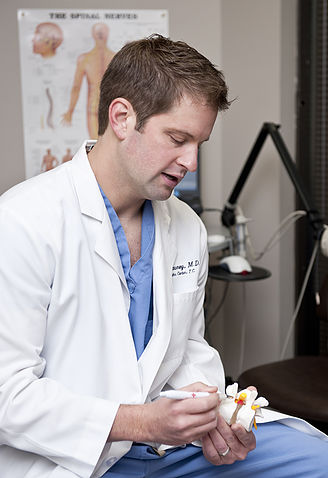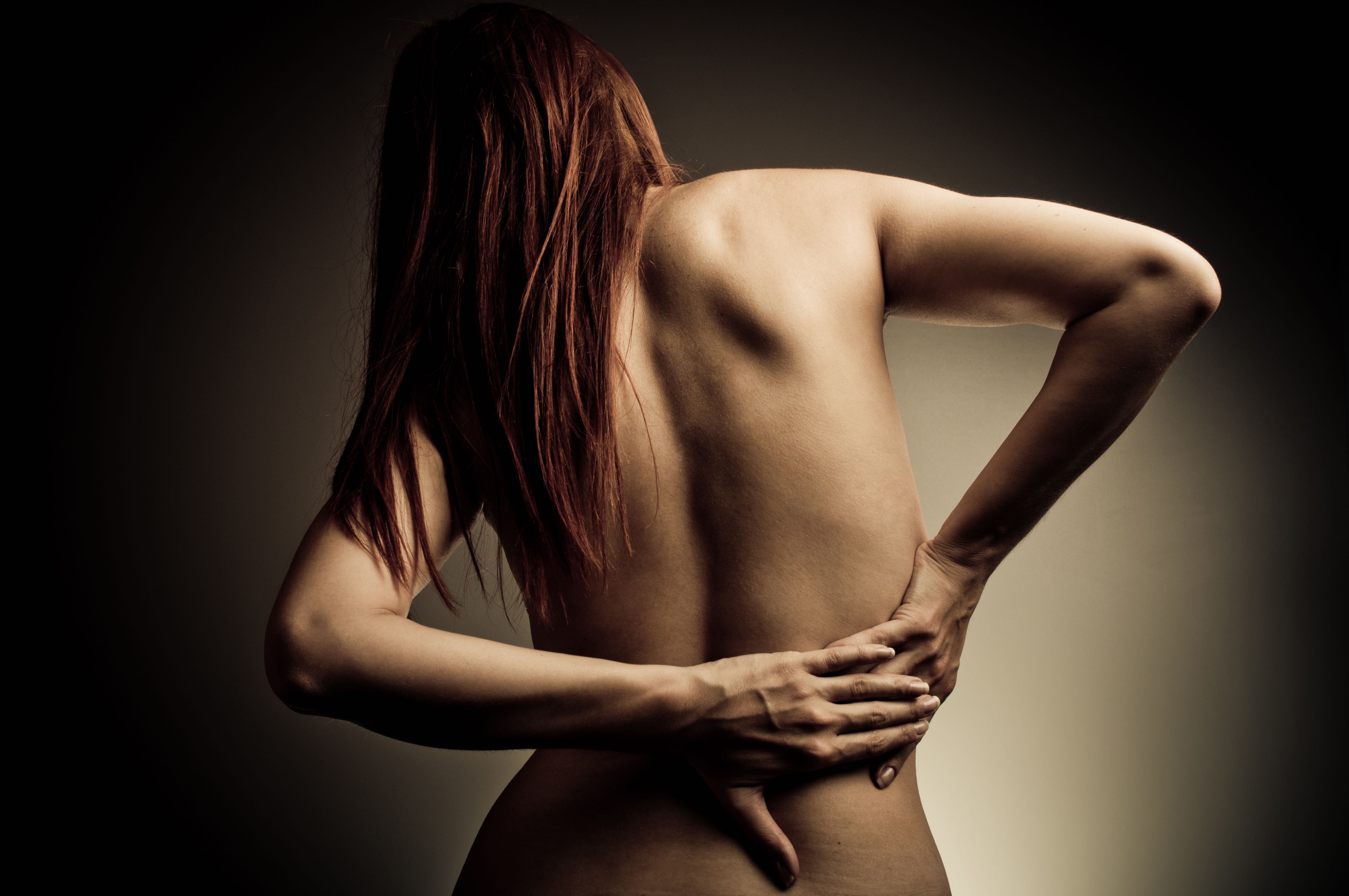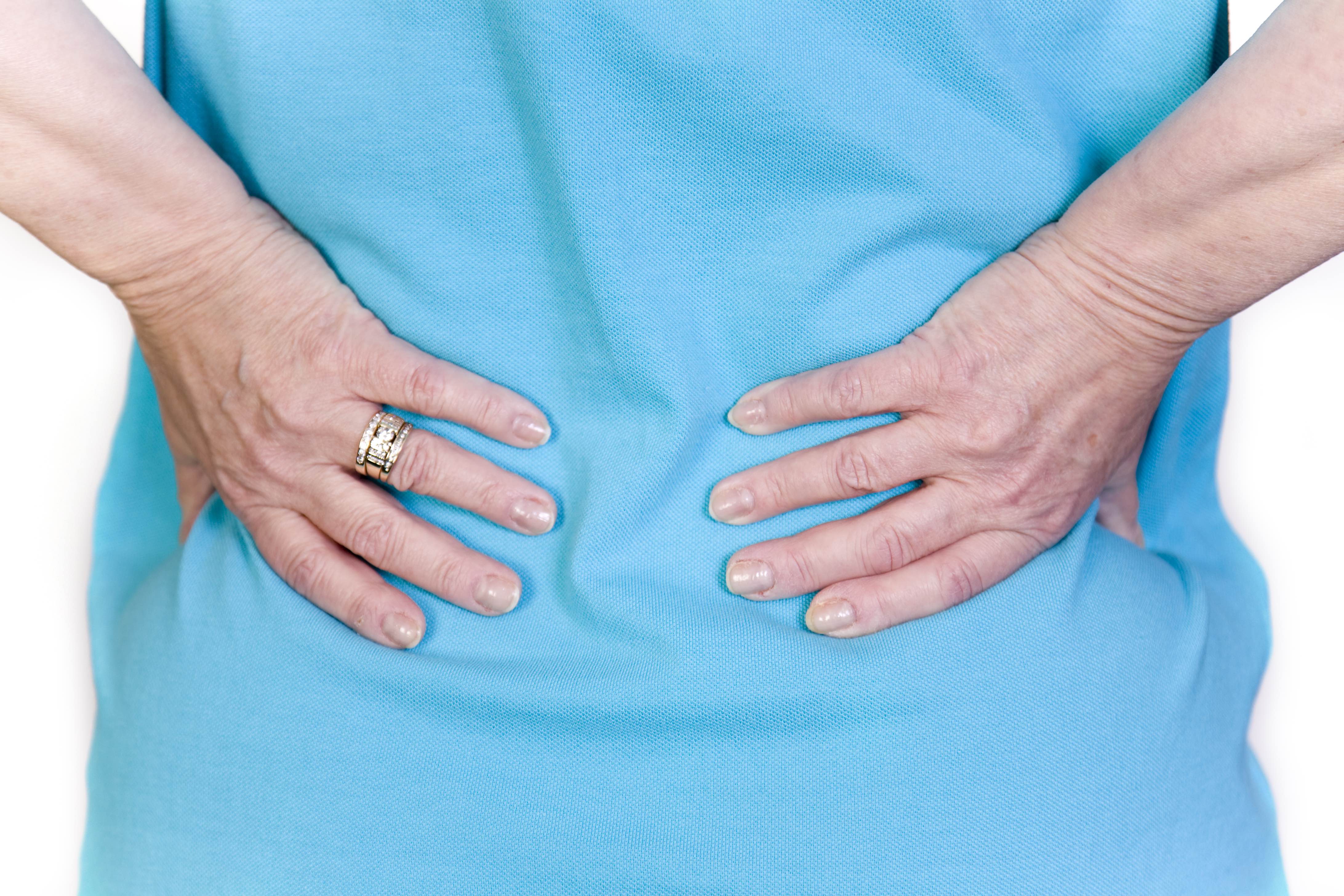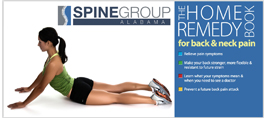-
Mark J. Downey, MD
10 Old Montgomery Hwy #200. Homewood, AL 35209
Appointments & Referrals: (205) 271-6511 - Schedule Now

Osteoporosis and back pain
It’s estimated that half of women over age 50 develop weakening of the bones, called osteoporosis, which can lead to painful back and neck pain symptoms.
The most common cause of osteoporosis pain is a spinal compression fracture. These fractures can be very painful because the collapsed vertebrae may pinch the nerves that radiate out from the spinal cord. The pain symptoms can range from minor tenderness to extreme back pain.
It can cause severe back pain that gets worse when standing or walking. Sometimes there is relief when you lie down and take the weight off your spine. Those with a compression fracture also experience extreme pain when twisting or bending the body.
What causes osteoporosis:
 As you age, old bone tissue can break down faster than its created. This can cause your bones to become more porous and fragile. It can also result in severe back or neck pain.
As you age, old bone tissue can break down faster than its created. This can cause your bones to become more porous and fragile. It can also result in severe back or neck pain.
The National Osteoporosis Foundation estimates that half of all women over the age of 50 will eventually develop osteoporosis and that 80 percent of Americans with osteoporosis are women. Women, the foundation reports, account for up to 80% of all hip fractures.
Risk factors for osteoporosis include:
• age over 50
• a woman going through menopause before age 45
• having ovaries removed before age 45
• having low estrogen in women
• men having low testosterone
• vitamin D deficiency
• smoking
• having a family history of osteoporosis
• not enough weight-bearing exercise
How is osteoporosis diagnosed?
Osteoporosis is diagnosed with a bone density diagnostic tool called dual energy X-ray absorptiometry (DXA), which scans your hip and spine to determine how dense your bones are compared to other people of your gender and age. White and Asian women, especially those past menopause, are at highest risk
While most people with osteoporosis are women, about 2 million are men.
Also, studies show that a first osteoporotic fracture makes it five times more likely further fractures will occur. This underscores why those with osteoporosis seek medical treatment with diet and medications to strengthen bone before it reaches the fracture stage.
How is osteoporosis treated?
The good news is that there are two procedures that treat osteoporosis and can relieve symptoms: Kyphoplasty and Vertebroplasty. Vertebroplasty and kyphoplasty are both minimally invasive surgical procedures for treating osteoporotic fractures where a cement-like material is injected directly into the fractured bone. This stabilizes the fracture and provides immediate pain relief in many cases.
Kyphoplasty
Kyphoplasty is a minimally invasive surgical treatment for fractures. Kyphoplasty involves using a small incision to insert a small balloon into the collapsed vertebrae to restore height and function to the spine. The balloon is replaced by cement that makes the bone strong again.
 During a kyphoplasty, you will have medication through an IV to relax you. Using a C-arm that provides the spine specialist a view of your spine, a needle is inserted through your skin and guided into the spinal vertebra that is collapsed or fractured. A special balloon is inflated within the vertebra to enable the damaged vertebra to regain a normal shape. Using X-ray guidance, the spine physician then injects a special cement-like material into the reshaped vertebra which then hardens. The spine physician then removes the needle. No stitches are needed. The entire kyphoplasty procedure will probably usually takes less than an hour. If more than one vertebra is treated it may take slightly longer.
During a kyphoplasty, you will have medication through an IV to relax you. Using a C-arm that provides the spine specialist a view of your spine, a needle is inserted through your skin and guided into the spinal vertebra that is collapsed or fractured. A special balloon is inflated within the vertebra to enable the damaged vertebra to regain a normal shape. Using X-ray guidance, the spine physician then injects a special cement-like material into the reshaped vertebra which then hardens. The spine physician then removes the needle. No stitches are needed. The entire kyphoplasty procedure will probably usually takes less than an hour. If more than one vertebra is treated it may take slightly longer.
By restoring the vertebrae to a more normal state, alignment of the spine may be improved. A pain prescription is typically provided to relieve any post-procedure soreness, and pain relief can follow within two days of surgery. Some patients report an immediate improvement in their pain symptoms when standing to walk immediately after the procedure.
The difference between osteoarthritis and osteoporosis
While both osteoporosis and osteoarthritis are both common conditions, they are different. Here are the facts on osteoarthritis. Osteoarthritis occurs when the covering on the ends of bones gradually wears away, becoming frayed and rough. It typically develops due to many years of use and affects people middle-aged and older. Osteoarthritis targets hands and weight- bearing joints, such as knees, hips, feet and back.
It is important to be aware of the risk factors for osteoarthritis:
- Individuals over the age of 45 yrs or older are at greater risk
- Majority of sufferers are women
- Certain hereditary conditions including defective cartilage and malformed joints
- Joint injuries caused by physical labor or sports
- Obesity
- Diseases that alter normal structure and function of cartilage
Symptoms usually come on gradually and include the following:
- Pain and in ammation may develop gradually and feel like a deep ache.
- Swelling and stiffness
- May be worse in the morning and feel better with activity
- Loss of range of motion
- “Sticking” and weakness. Joint may lose strength and buckle or lock.
- Loose fragments of cartilage and other tissue can cause locking or “sticking.”
How can I avoid developing osteoporosis?
Controllable factors include those things that an individual can do during one's lifetime to lower their risk for developing osteoporosis. For instance, smoking, excessive alcohol, poor nutrition with low calcium intake and lack of exercise can all contribute to the development of the disease.
How osteoporosis is treated with KYPHOPLASTY

Mark Downey, MD
As a physiatrist, Dr. Downey specializes in diagnosis and non-surgical treatment of pain-related spinal disorders. He is board certified in Physical Medicine and Rehabilitation (PM&R) since 2007 and uses his comprehensive spine and musculoskeletal training to determine the appropriate line of treatment for a variety of spinal conditions.
Testimonials
Home Remedy Book

As a community service, Spine Group Alabama mails out a free 36-page Home Remedy Book with customized stretches that can relieve some back and neck pain symptoms. Enter your name and address and we will mail you a copy.
Symptoms Chart

Some symptoms can become permanent if you don’t see the physician with in 24 hours. Find out when you can use “watchful waiting” and when you have an emergency symptom.
Need an Appointment?
Spine Group Alabama specializes in the treatment of back pain, neck pain, herniated discs, and all types of ligament strain related to the neck and low back. Spine Group Alabama is referred back and neck pain patients from across Alabama, including Birmingham, Tuscaloosa, Auburn, Huntsville and Montgomery.
Office Hours:
Monday - Thursday: 8am - 4:30pm
Friday: 8am - 2:30pm
Saturday/Sunday: Closed
(205) 271-6511

